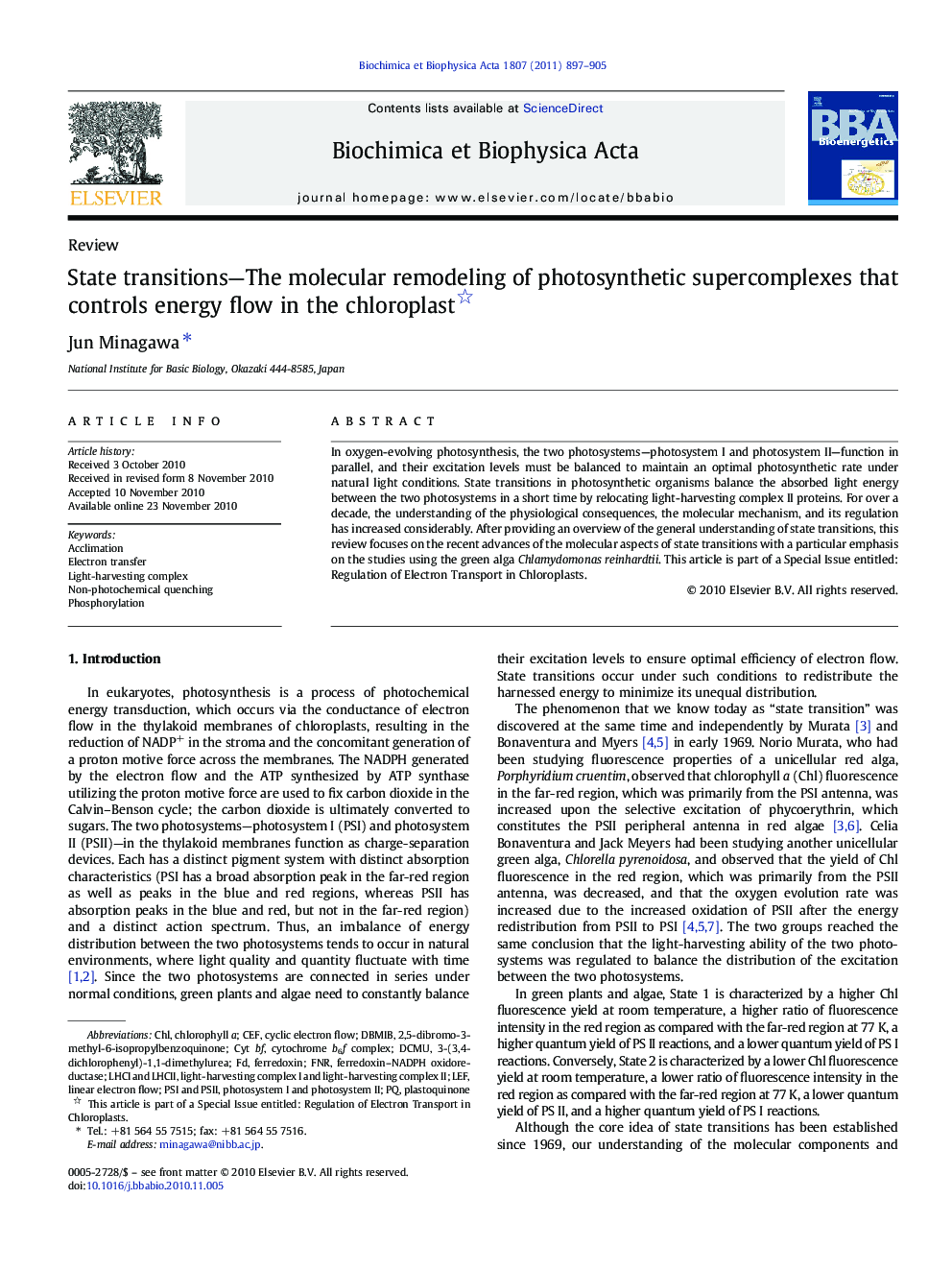| کد مقاله | کد نشریه | سال انتشار | مقاله انگلیسی | نسخه تمام متن |
|---|---|---|---|---|
| 1942649 | 1052622 | 2011 | 9 صفحه PDF | دانلود رایگان |

In oxygen-evolving photosynthesis, the two photosystems—photosystem I and photosystem II—function in parallel, and their excitation levels must be balanced to maintain an optimal photosynthetic rate under natural light conditions. State transitions in photosynthetic organisms balance the absorbed light energy between the two photosystems in a short time by relocating light-harvesting complex II proteins. For over a decade, the understanding of the physiological consequences, the molecular mechanism, and its regulation has increased considerably. After providing an overview of the general understanding of state transitions, this review focuses on the recent advances of the molecular aspects of state transitions with a particular emphasis on the studies using the green alga Chlamydomonas reinhardtii. This article is part of a Special Issue entitled: Regulation of Electron Transport in Chloroplasts.
Research Highlights
► In oxygen-evolving photosynthesis PSI and PSII function in parallel.
► Their excitation levels must be balanced to maintain an optimal photosynthesis.
► State transitions balance the absorbed light energy between the two photosystems.
► Knowledge on its molecular mechanisms and regulation has increased considerably.
Journal: Biochimica et Biophysica Acta (BBA) - Bioenergetics - Volume 1807, Issue 8, August 2011, Pages 897–905